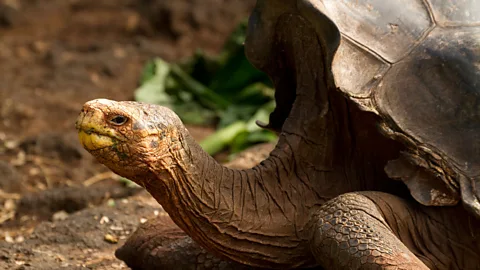The remote island where giant tortoises clear runways for albatrosses
Kevin Gepford
Features correspondent
 Alamy
AlamyAn army of reptilian bulldozers is helping a Galápagos island make an ecological comeback.
Española's burgeoning tortoise population – made up of the children and grandchildren of Diego, one of the archipelago's most beloved tortoise residents – is helping to restore the island's lost ecosystem.
Before the arrival of humans, Española had as many as 8,000 resident tortoises. However, in the 1800s, pirates and whalers nearly stripped Española and neighbouring islands of their tortoises for their meat. These sailors also left behind goats, which went wild, multiplied, and devoured native vegetation.
